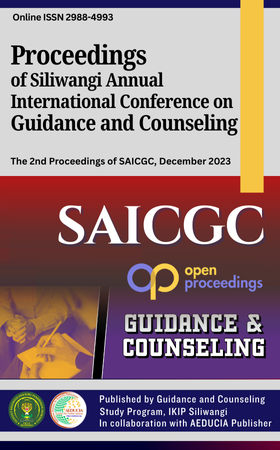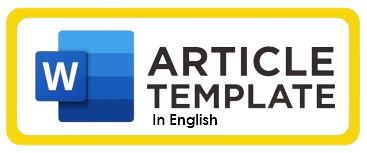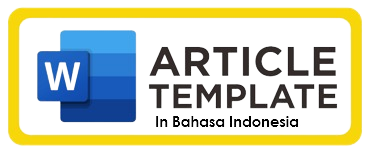The Effect of Self-Regulation on Academic Procrastination on Students with Learning Disabilities at School
DOI:
https://doi.org/10.64420/saicgc.v2i1.48Keywords:
procrastination, self regulation. leaning disabilitiesAbstract
Academic procrastination is a problem that occurs in students in the school environment. Academic procrastination is closely related to failure in self-regulation (self-regulation). Self-regulation refers to self-generated thoughts, feelings, and behaviors that are oriented towards achieving personal goals (Park & Sperling, 2012; Zimmerman, 2000). Individuals who havelow self-regulationtend to do acts of procrastination, because of the ability to doself-regulation or self-regulation is an important factor influencing the emergence of procrastination behavior in students (Steel, 2007) Students with Learning Disabilities (LD) were found to experience lower levels of regulation than their Non Learning Disabilities (NLD) counterparts due to incorrect theories about self, task, and effort required (Butler, 1996; Pintrich, Anderman, & Klobucar, 1994) and because of difficulty in choosing. , implement, and monitor appropriate learning strategies.
References
Creswell, J.W. 2012. Research Design: Qualitative, Quantitative and Mixed Approaches. Yogyakarta: Student Libraries.
Ferrari J. R. Johnson J. L. & Mc Cown, W. G. (1995). Procrastination and Task Avoidance Theory, Research and Treatment. New York: Plenum Press.
Fischer, C. (1999). Read This Paper Later: Procrastination With TimeInconsistent Preference. New York: Resources for The Future.
Ghufron, M., & Risnawita, R. (2012). Psychological theories. Yogyakarta: Ar Ruz Media.
Hanifah, F., & Rusmawati, D. (2019). Effect of Self Regulated Learning Training on academic procrastination in students of SMP Negeri 33 Semarang.Empathy Journal, Volume 8 (Number 2), pages 124-130.
Heppner, Kivlighan & Wampold (2008). Research design in counseling (edisi 3). USA: The Thomson Corporation.
Junia, A.V. (2019). Level of Academic Procrastination Based on Intensity of Social Media Use at SMP Negeri 18 Palembang.Comprehensive Counseling Journal, 21.
LaForge, M. C. 2008. Applying Explanatory Style to Academic Procrastination, Journal of Clemson University, 16 (2), 418-529.
Latipah, Eva. (2010). Self Regulated Learning Strategy and Learning Achievement: A Meta-Analytic Study. Sunan Kalijaga State Islamic University.
Meirav Hen and Marina Goroshit. (2012). Academic Procrastination, Emotional Intelligence, Academic Self-Efficacy, and. Hammill Institute on Disabilities, 1-9.
Munawaroh, M.L. (2017). Level of Academic Procrastination of School Students.Journal of Guidance and Counseling Studies, 26-31.
Robert M. Klassen, L. L. (2008). Procrastination and Motivation of Undergraduates with Learning Disabilities:. Learning Disabilities Research & Practice, 137-147.
Santika, W. S., & Sawitri, D. R. (2017). Self-regulated learning and academic procrastination in class XI students of SMA Negeri 2 Purwokerto. EMPATI Journal, 44–49.
Santrock, J. W. (2014). Educational psychology, 5(2). Jakarta: Salemba Empat.
Ulum, M.I. (2016). Self-Regulated Learning Strategies for Lowering Levels.PSYMPATHIC : Scientific Journal of Psychology, 153-170.
Zimmerman, B. J. (1989). A Social Cognitive View of Self-Regulated Academic Learning. Journal of Educational Psychology. Vol.81, No.3, 329-339.
Zimmerman, B.J (2000). Attaining Self-Regulation A Social Cognitive Perspective. In Boekerts, M., Pintrich, P. R., Zaidner, M., (Eds), Handbook of Self Regulation. California: Academic Press
Zimmerman, B.J. (1990). Self-Regulated Learning and Academic Achievement : an overview. Journal Educational Psychologist, 25, 1, 3-17.
Zimmerman, B.J. (2002). Becoming a Self-Regulated Learner: an overview. Theory into Practice. College of Education. Volume 41. Number 2.
Downloads
Published
How to Cite
Issue
Section
License
Copyright (c) 2025 Yunis Dyah Ayu Ratih Sulistyowatia

This work is licensed under a Creative Commons Attribution-ShareAlike 4.0 International License.
Authors who publish with this journal agree to the following terms: (1) Authors retain copyright and grant the journal right of first publication with the work simultaneously licensed under a Creative Commons Attribution-ShareAlike 4.0 International. that allows others to share the work with an acknowledgement of the work's authorship and initial publication in this journal; (2) Authors are able to enter into separate, additional contractual arrangements for the non-exclusive distribution of the journal's published version of the work (e.g., post it to an institutional repository or publish it in a book), with an acknowledgement of its initial publication in this journal; (3) Authors are permitted and encouraged to post their work online (e.g., in institutional repositories or on their website) prior to and during the submission process, as it can lead to productive exchanges, as well as earlier and greater citation of published work.

















